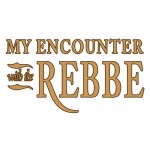Rabbi Pinchus Feldman
After my wife and I got engaged in 1966, the Rebbe wished my father “Mazel Tov,” and then added: “They will be in Australia.”
My wife, Pnina, is from Australia – her father, Rabbi Chaim Gutnick, was a popular rabbi in Melbourne – but it was only after hearing those words that we knew our mission in life would be there.
Before the wedding, the Rebbe told me to take the requisite tests on Jewish Law in order to receive rabbinic ordination. I had actually already been ordained the previous year when I was a yeshivah student in Israel. Still, now the Rebbe wanted me to seek as many additional certificates of ordination as I could, which I did: From the yeshivah in 770, where I was studying at the time, from Rabbi Pinchas Hirschprung of Montreal, Rabbi Berel Rivkin of Yeshiva Torah Vodaath, and Rabbi Moshe Feinstein, the foremost Halachic authority at the time.
The Rebbe also specified that our wedding should be in Melbourne, as a large, community-wide event tied to the opening of the local Yeshivah Gedolah.
In addition, at the wedding and each of the Sheva Brachot celebrations over the following week, I was to deliver a chasidic discourse, along with at least three in-depth Talmudic lectures overall. The Rebbe also wanted there to be one Sheva Brachot in Sydney. Ostensibly, this was because my wife’s grandfather, Rabbi Asher Abramson, was the head of the Sydney rabbinic court, but the Rebbe specifically requested that the event be held in a different synagogue – that of the “Yeshiva” community.
Now, at around that time, a few members of this community had written to the Rebbe with a request. Mostly Hungarian and Polish survivors, they had founded a small yeshivah – giving the community its name – and now they wanted a day school. Although they weren’t Lubavitchers themselves, they had seen the school founded by Melbourne’s Lubavitch community flourish under the direction of a young, charismatic American named Rabbi Yitzchok Groner. So, they asked the Rebbe to send someone who would likewise be able to connect with the younger generation in Sydney.
At first, the Rebbe didn’t respond to this letter, but that didn’t mean that he didn’t take notice of it. In fact, the Rebbe had a vision for Sydney that would start to unfold with this community. (more…)





